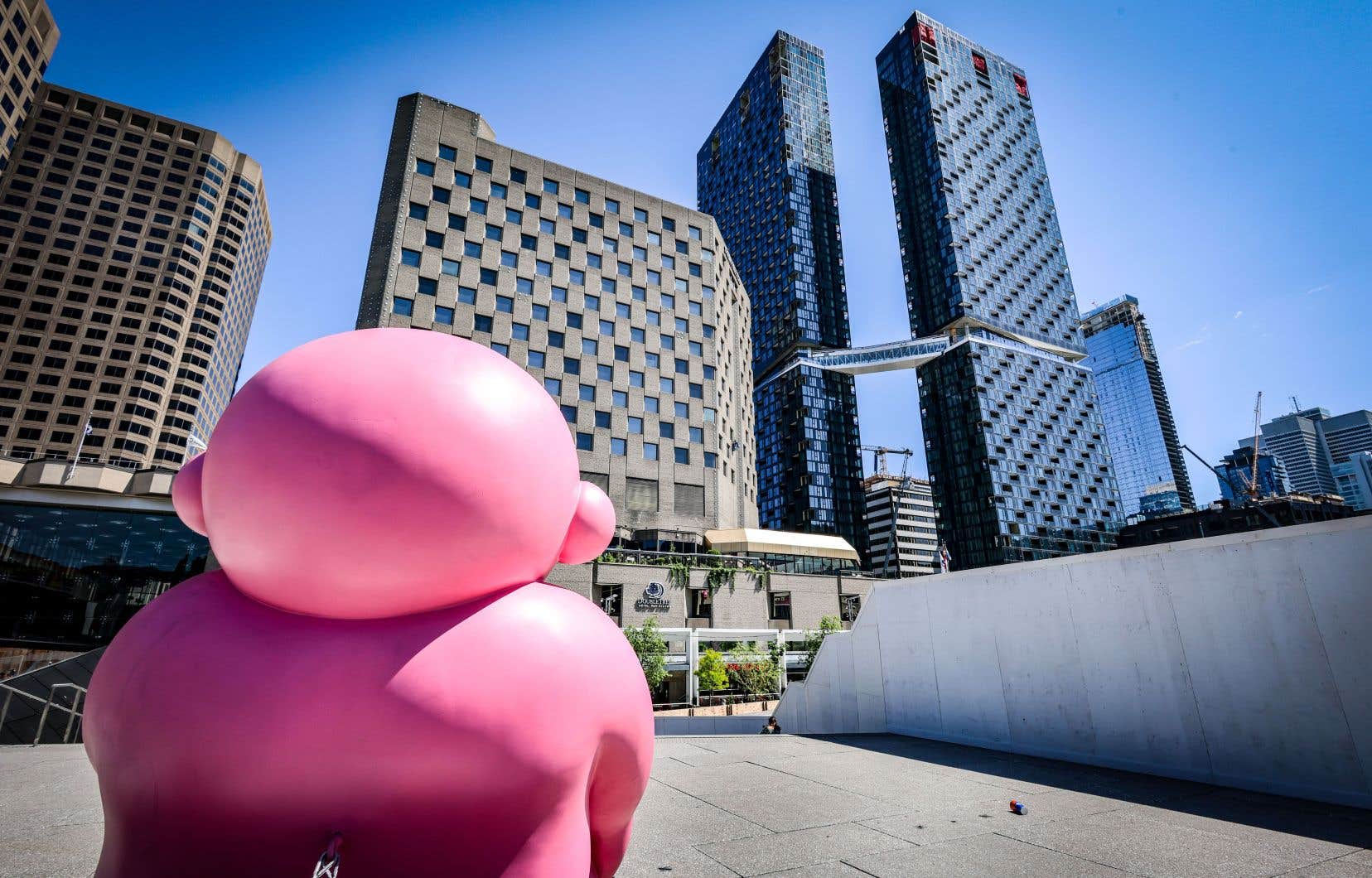The battle for skyscrapers continues in Montreal. One of the latest additions to this conquest of heights, the Maestria, inaugurated its footbridge last week which connects the two towers of 58 and 61 floors. The developers of this real estate complex pride themselves on having created an emblematic building for the metropolis. But boldness and originality are not always enough to make a building an icon, experts warn.
Built on the Spectrum site, demolished in 2008, the two Maestria towers designed by the Lemay firm stand in an area which, over the last decade, has experienced accelerated development. The spectacular footbridge, housed at 26e floor, allows a breathtaking view of the Place des Arts and the Place des Festivals.
“The Maestria will mark a landscape of Montreal,” says Marco Fontaine, vice-president, residential development at Groupe Devimco, partner of the FTQ Real Estate Solidarity Fund in this project. “We think that the footbridge is an architectural element that is unique in Quebec, unique in Montreal. » The two buildings are described by developers as the tallest residential towers in the metropolis. But, in this regard, the Maestria rivals 1, Square Phillips (Menkès Shooner Dagenais LeTourneux Architectes), from the Brivia Group, which, with its 61-story tower, claims the same title.
The most distinctive feature of the Maestria is its 30 meter long walkway. Attached to the tower located to the east, it is simply placed at 26e floor of the other building on a steel plate so as to allow the tower to move in the event of high winds or an earthquake. “There were strong winds three weeks ago, but nothing changed,” says Mr. Fontaine.
The footbridge will not be accessible to everyone since only the owners of the 1042 apartments located on the upper floors of the two towers will be able to use it. Which is not the case for tenants of housing under 26e floor.
The “OUMF” effect
Professor at the UQAM School of Design, Philippe Lupien observes a new trend in the race for architectural prestige. From the 20the century, he says, skyscrapers were the prerogative of large companies, as evidenced by the Woolworth Building (1913) or the Chrysler Building (1930), in New York.
In Montreal, the wave of skyscrapers occurred in the 1960s, with Place Ville Marie (by architects Henry N. Cobb and Ieoh Ming Pei, 1962), the Bourse Tower (Luigi Moretti, 1961) and that of CIBC (Peter Dickinson, 1962).
At that time, prestigious buildings made it possible to materialize the prosperity of businesses, including banks and insurance companies, he explains. “What makes me doubtful is the idea of housing, of using the private lives of hundreds of citizens, to produce this effect. I don’t understand this social phenomenon. »
As for the claims on the emblematic properties of Maestria, it is time that can confirm it, but also competition, he says. “The tallest tower will always be overtaken by the next one,” he recalls. “It’s part of the character of architects and developers to want to be the big thing that everyone is talking about. »
In Montreal, the race for height remains limited, however, since urban planning rules prevent the construction of buildings taller than Mount Royal.
Philippe Lupien agrees that the Maestria is spectacular and its proportions are interesting. In his eyes, however, the towers of the 1960s remain without equal in Canada. As for the Olympic Stadium (Roger Taillibert, 1976), it is a special case. “The fact that it became a concrete-steel hybrid, that it was finished in the absence of Taillibert and that the canvas did not rise, it still remains for me as an unfinished project. »
Housing crisis
“The two towers of the Maestria are elegant. It is a spectacular piece of architecture due to its unusual form. The footbridge is daring,” recognizes France Vanlaethem, president of Docomomo Québec, an organization dedicated to modern architectural heritage.
An iconic building is a “classic”, a “masterpiece”, she says. “For me, it’s something that will last over time, like an innovative building that will become classic. In addition to the Bourse Tower and Place Ville Marie, Habitat 67 or the Jean-Talon building in Quebec City (Evans St-Gelais, 1972), nicknamed “the Bunker” appear in this category,” she underlines.
However, she judges that, in recent years, several Montreal buildings have stood out, such as the National Film Board building on the Balmoral block, the Port of Montreal tower (Provencher Roy, 2023) and the Moxy tower ( Chevalier Morales), under construction on rue Saint-Jacques.
“But that doesn’t solve the housing problem in Montreal,” she says.
With rental costs varying from $1,630 per month for a studio to $3,390 per month for a 4 1/2, in addition to penthouses sold for $2.3 million to $7.4 million, Maestria’s housing is far from affordable.
The Maestria is not subject to the Regulations for a mixed metropolis adopted in 2021, which requires developers to provide a share of social and affordable housing in new buildings. The developers, however, paid a contribution of 10.1 million to the City as compensation. “The construction of all these towers in recent years has meant that the city center has become very gentrified with very expensive housing,” notes the coordinator of the Ville-Marie Housing Committee, Éric Michaud.
Between 2005 and 2022, in the Ville-Marie borough, 43,236 construction starts were counted, of which only 3.1% were social housing, while elsewhere in Montreal, this rate reached 12.6%, underlines M. . Michaud. “The construction of social housing in Ville-Marie has been very neglected because the City has rolled out the red carpet for large private developers by granting them countless exemptions from the urban plan or zoning regulations. »
